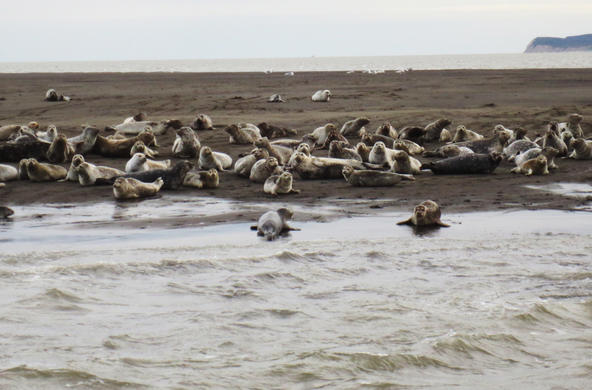I know of few environmental topics that engender more emotion than proposals to extract natural gas using hydraulic fracturing methods (i.e., fracking) to open up the pores in bedrock.
Now don’t get me wrong: I am not in favor of an expanded use of fossil fuels from any source. We must get off the rich diet of carbon from fossil fuels if we are to avoid the worst of potential changes in our climate. Fracking promises that we will delay the transition from fossil fuels to renewable energy, because it can potentially supply inexpensive natural gas for another generation.
But, now I am going to surprise you. I don’t think that the actual process of fracking itself is necessarily harmful, if it is carefully instituted and regulated following well-studied procedures to establish best practice. Indeed, the petroleum industries should encourage and embrace such regulation, for it would allow them to move forward with their business with greater public trust and less litigation, despite the fact that it might shave a few cents off the bottom line of their profits. Thankfully, the U.S. Department of Interior has taken a step forward in its new standards for hydraulic fracturing on public lands.
Various studies from earth scientists in Duke’s School of the Environment all point to contamination of surface and groundwaters when hydraulic fracking is performed without proper well-casings and careful attention to waste-water management. However, one study found that the generation of waste waters during natural gas production was lower from fracked wells than from traditional natural gas wells.
The most recent paper from the Duke group lists proper design of well casings and management of flowback waters as the major problems with hydraulic fracture methods. Those who wish to employ hydraulic fracking need to deal with the waste waters they generate and with each of the constituents, both natural and added, that are found in flowback waters.
Even though the methane generated from natural gas wells amounts to about 0.42% of total natural gas production, it too should be minimized. Methane contributes to the greenhouse warming of Earth’s atmosphere, and is a pollutant that affects us all. Other hydrocarbons, such as ethane, are also emitted from natural gas operations. Since 2010, concentrations of ethane have increased from 7 to 15% of non-methane hydrocarbons in the atmosphere downwind of certain gas-producing regions.
Careful attention should be given to the potential for low-level earthquakes in some areas, such as Oklahoma and Ohio that have shown increased seismic activity with waste water disposal by deep injection. Disposal by deep injection should be prohibited in these areas.
In our effort to generate electricity, to the extent that natural gas replaces coal, we will lower our emission of various pollutants to the atmosphere—carbon dioxide, nitric oxide, sulfur dioxide and mercury. These are all laudable goals, but they should not be reached while tolerating widespread pollution of our surface waters. Nor should they be pursued to the exclusion of other sources of energy that might permanently eliminate our emissions of greenhouse gases to the atmosphere. A penny or two of royalties from natural gas production could offer substantial funding for the further development and implementation of solar, wind, tidal and geothermal power for our future.
Let’s take the emotion out of fracking, and get on with a serious consideration of the facts.
References
Allen, David T., Vincent M. Torres, James Thomas, David W. Sullivan, Matthew Harrison, Al Hendler, Scott C. Herndon, Charles E. Kolb, Matthew P. Fraser, A. Daniel Hill, Brian K. Lamb, Jennifer Miskimins, Robert F. Sawyer, and John H. Seinfeld. 2013. Measurements of methane emissions at natural gas production sites in the United States. Proceedings of the National Academy of Sciences 111: 17768–17773
Darrah, T.H., A. Vengosh, R.B. Jackson, N.R. Warner, and R.J. Poreda. 2014. Noble gases identify the mechanisms of fugitive gas contamination in drinking-water wells overlying the Marcellus and Barnett Shales. Proceedings of the National Academy of Sciences 111: 14076–14081
Lutz, Brian D., Aurana N. Lewis, and Martin W. Doyle. 2013. Generation, transport and disposal of wastewater associated with Marcellus shale gas development. Water Resources Research 49, 647–656.
Vengosh, A., R.B. Jackson, N. Warner, T.H. Darrah, and A. Kondash. 2014. A critical review of the risks to water resources from unconventional shale gas development and hydraulic fracturing in the United States. Environmental Science and Technology 48: 8334-8348.
Vinciguerra, T., S. Yao, J. Dadzie, A. Chittams, T. Deskins, S. Ehrman, and R.R. Dickerson. 2015. Regional air quality impacts of hydraulic fracturing and shale natural gas activity: Evidence from ambient VOC observations. Atmospheric Environment 110: 144-150.
Warner, N.R., C.A. Christie, R.B. Jackson, and A. Vengosh. 2013. Impacts of shale gas wastewater disposal on water quality in western Pennsylvania. Environmental Science and Technology 47:






